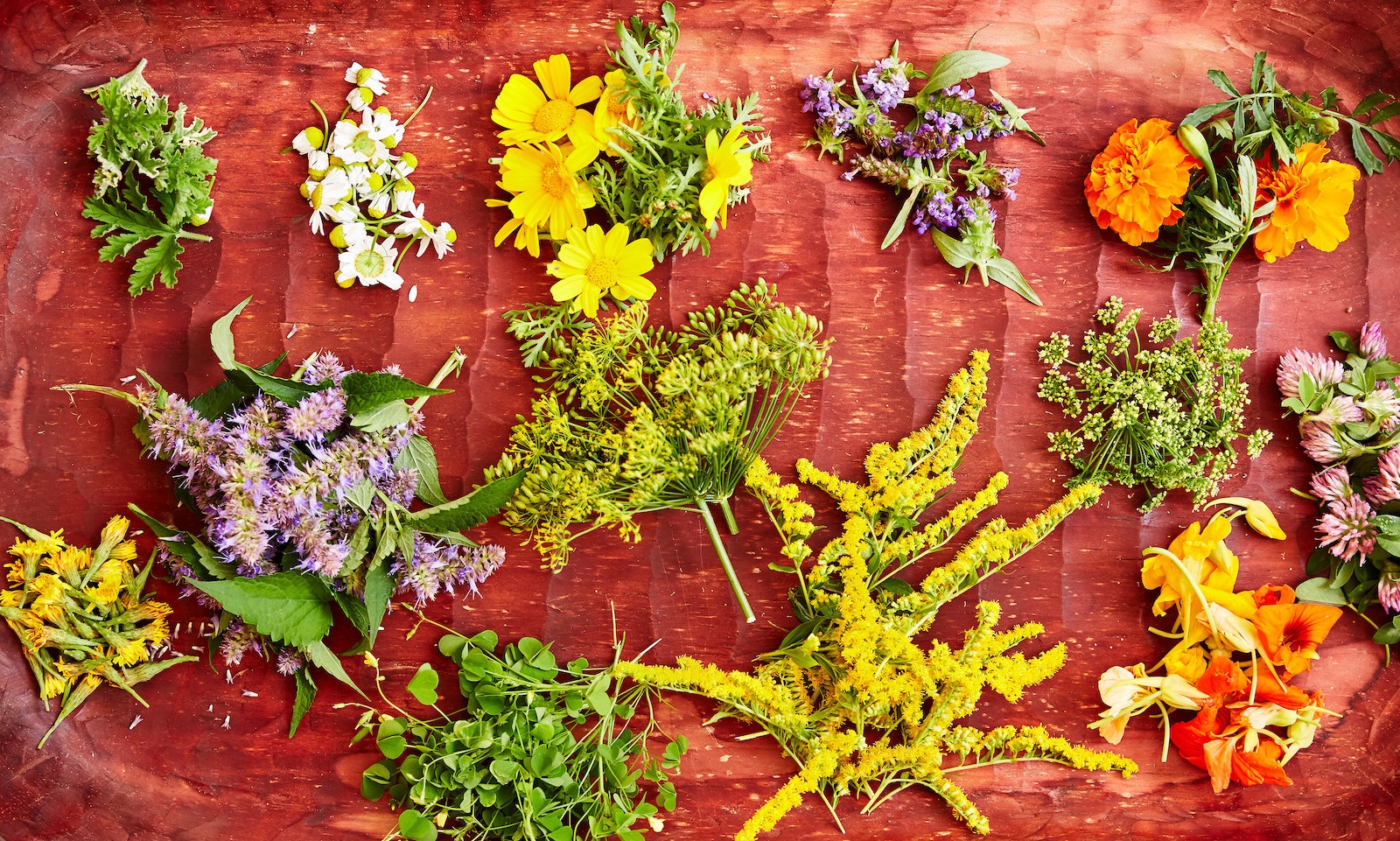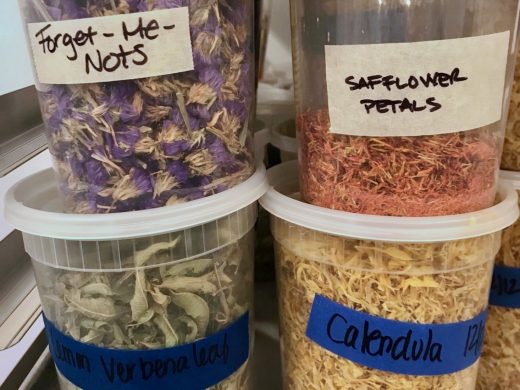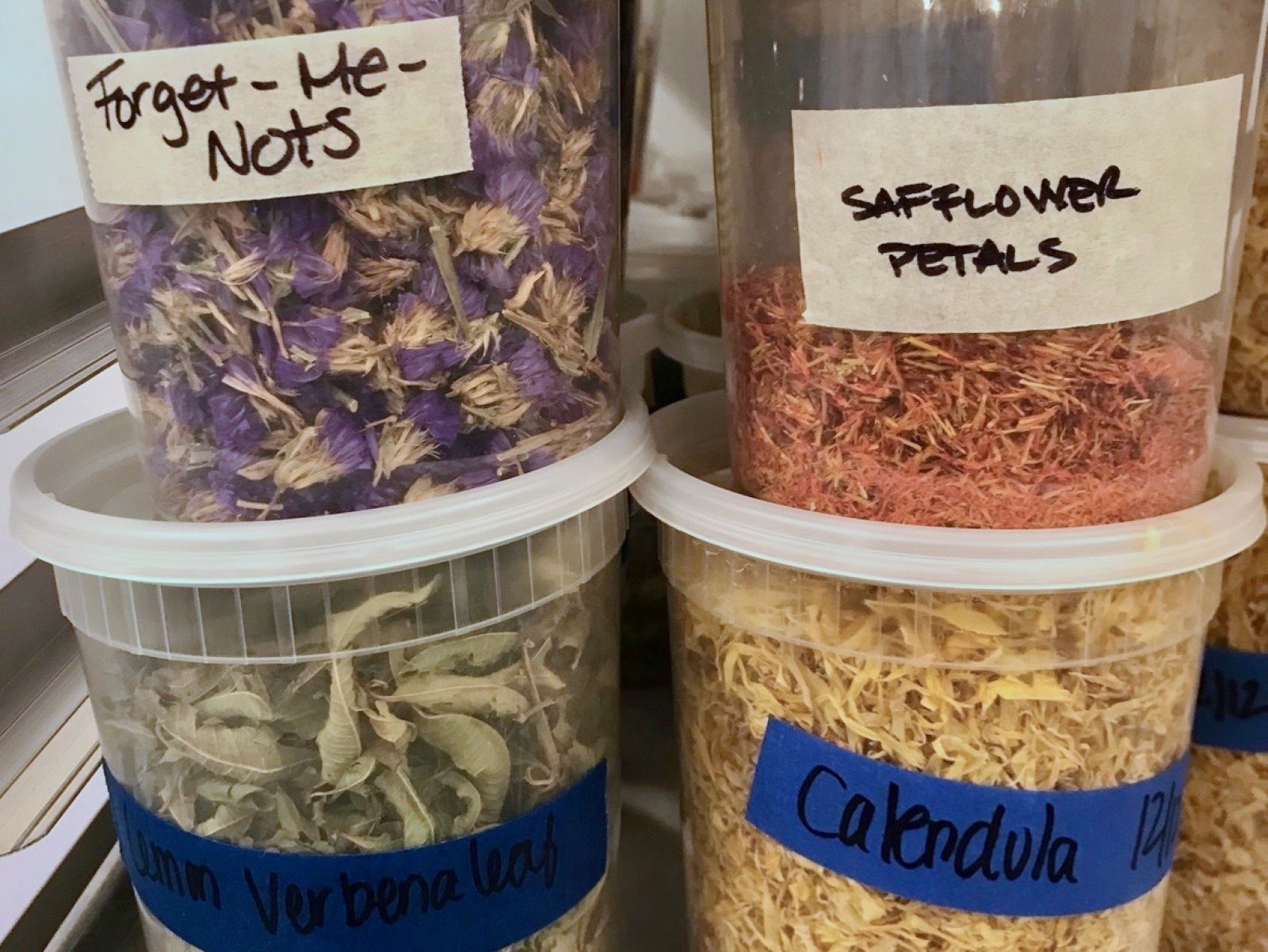Dehydrated food goes from hiking to haute cuisine
Ever since fifth grade, when I made beef jerky with Mrs. Swanagan in a trailer behind my elementary school, I’ve been fascinated by the process of creating inedible food out of perfectly good ingredients by removing all of their moisture. Dried fish, fruit leather — the list is endless. However, in the past few years, chefs at high-end restaurants have been rescuing the technique of dehydration from River and Dawn’s camping supplies and elevating it to haute cuisine.

Take Il Fiorista, a new boutique and Mediterranean-inspired eatery in Manhattan that specializes in edible flowers (il fiorista means “the florist” in Italian). Everything on the menu incorporates flowers, whether it’s geranium aioli or duck cappellacci with rose petal pasta.
After we finished hacking up herbs, I went on my merry way. I’d bought a Nesco dehydrator (at only 1/5 of the cost of a restaurant-quality device), and it was all pristine and white at home, just waiting for me to mess it up.
Whereas Price’s looked like a run-of-the-mill wine fridge, mine resembled a small igloo for a miniature sled dog or a plastic version of Amy Winehouse’s beehive hairdo. He’d recommended pouring the tomato and chili purees into two pans then placing them in the dehydrator, but my round receptacle wouldn’t accommodate that plan.
Why not use foil, then? I layered a few pieces on to two levels of the Winehouse beehive, then carefully dribbled in the purees I’d made from canned, diced tomatoes and chipotle peppers in adobo. Those ingredients are practically the same as heirloom tomatoes and fresh chilies that have been fermented in salt and water, right?
I turned on the dehydrator and let a wave of noise wash over me — I hadn’t expected this, but it was louder than the grinder I use to make chocolate at home. I usually stow that in my NYC-sized closet for 24 hours or so when it’s working away, but the Winehive was much too large.
Six ear-splitting hours later, I decided I couldn’t wait the 16 hours Price had instructed. I turned off the dehydrator and opened it up, hoping to find thick pastes of both ingredients. Instead I’d made… paint! Van Gogh himself would have been envious of the texture of this substance, which had shellacked itself on to the foil as if it were the makings of a masterpiece.
Abandoning one disaster for another, I moved on to the flowers. Like my canned ingredients, who needed fresh hibiscus or peonies from local farms when I could get perfectly nice bouquets at my local bodega, flown in straight from Central and South America? Front and center in the bouquet bloomed a red rose, and since rose was one of the first prized flavorings in the history of the world (along with salt, sugar and, eventually, vanilla), it called out to me.
Before I dehydrated them, the rose petals tasted a bit like chewy plastic, but three hours at 95 degrees really concentrated the aroma of my great grandma Sara, with more than a hint of bitterness from the pesticides most likely used on the crops. (I’d washed them as Price had instructed, gently in a bowl of cool water, but alas.)
I’d made… paint!
Honestly, I’m amazed I let the whole thing brew for three hours, because half an hour in, the pollen being distributed throughout my house via the dehydrator’s open-air tunnel gave me the wickedest allergy attack I’ve had since I put my face in a litter of kittens. I’m also pretty sure I dislocated something with the force of my sneezes. But once my eyes had dried, I powdered the petals in a coffee grinder, which, with its stale bean crumbs, added a nice depth of flavor.
Then it was time to try the tomatoes and the chilies once again, making sure that I put much thicker scoops into the machine this time. And it worked! After only three hours in the Winehive, the pastes were ready to blend with the powdered flowers and the almost two dozen other ingredients in the recipe, including urfa biber, a kind of Turkish chile that can only be found at approximately one and a half spice shops in New York City. Price’s recipe makes boatloads of harissa, but after combining everything, I had a scant cup.
Sure, I could have made a dish imitative of Il Fiorista’s, but since I’d mastered the art of dehydration, I wanted to push it to the next level. So if my neighbors smell something funny in the hallway, it’s probably the last piece of my magnum opus: dehydrated prawn strips for my ingenious harissa “fruit” leather over polenta pellets. Truly high class.
Dehydration “is a direct link for us to be able to preserve the integrity of the flavors of flowers,” said Executive Chef Garrison Price when I met him at the restaurant on yet another rainy, cold New York winter afternoon. Instrumental jazz verging on elevator music chimed from the speakers as well-dressed women in their thirties chatted at a few tables, and the restaurant’s accountants conferred conspiratorially at the bar. The space felt airy and upscale, with the main wall sporting a colorful mural and the boutique in front boasting a table of unusual flower arrangements.
“The line we’re riding is Grandma’s potpourri basket,” Price said as we walked into the kitchen. “We don’t want people to be smacked in the head with flowers.”
Dehydration is one of the oldest ways to preserve food: Experts have traced it back to 12,000 BC, when Middle Eastern and Asian cultures were drying foods in the sun. At the end of the 18th century, the French invented a way to dehydrate using hot air, and in World War II, dehydrated foods were famously used in American soldiers’ rations. It’s a surefire way to lengthen the lifespan of an ingredient or dish by months or even years, plus it makes food lighter and easy to carry.
“We don’t want people to be smacked in the head with flowers”
As molecular gastronomy has become popular over the past few decades, so have all sorts of techniques to alter the taste, texture and appearance of everything edible; dehydration is one of the easiest ways to do it. Chefs can concentrate an ingredient’s flavor and make it look gorgeous. Perhaps most importantly, dehydration allows chefs to use seasonal ingredients year-round, preserving them so that we can have everything from flavorful squash blossom pasta to bright strawberry frosting in the winter.
Back at Il Fiorista, Price had offered to show me how he makes his hibiscus harissa for the dinner menu’s prawns and polenta with grilled bok choy. A veteran of Jean Georges’ and José Andres’ corporate teams, the earnest, thirtysomething chef punctuates his speech with phrases like “negatron” and “saweeeet!”
Price led me into the walk-in freezer to show me how the restaurant ferments tomatoes and chilies. Think big buckets of pureed ingredients with some salt added. Give them a little time, they’ll give you a little funk. They’re the secret sauce in the, um, sauce, which mainly consists of dehydrated versions of those fermented purees, olive oil and some spices.
(7)



